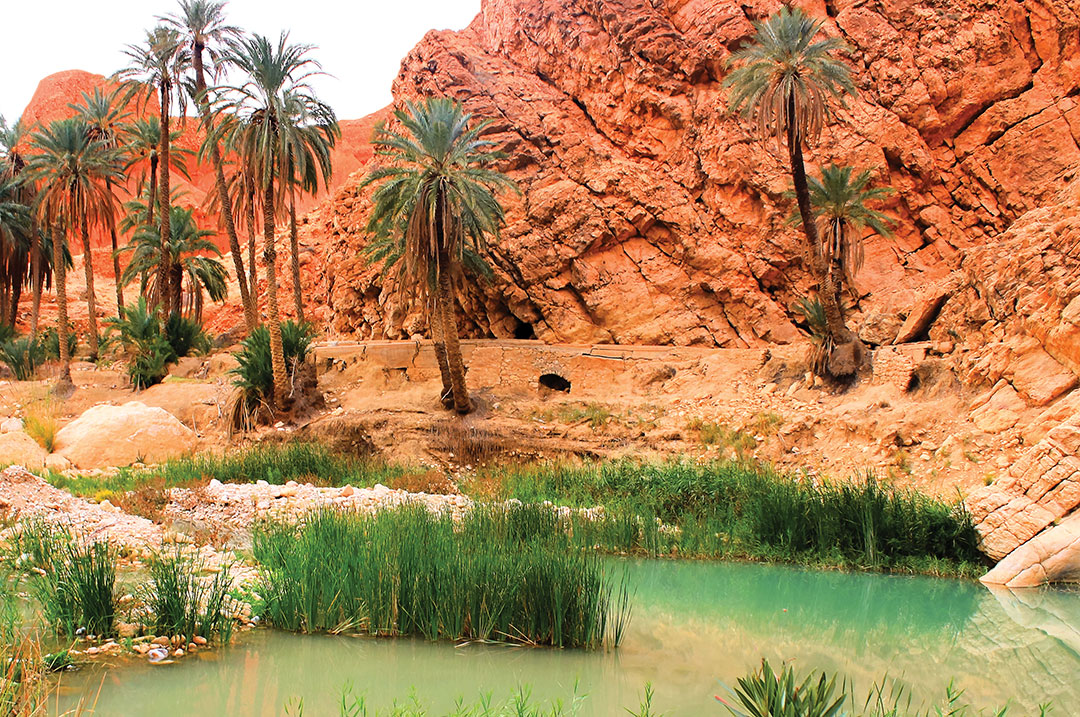ADF STAFF
In the seventh century, Islam began spreading from the Arabian Peninsula west to what is now Spain, and east to northern India. The religion and its political power spread through traders, pilgrims and missionaries.
It also spread through military conquests, with armies overwhelming vast territories and establishing imperial outposts. Most of this expansion came during the reign of the Rashidun Caliphate, the first four successors of Muhammad, from 632 to 661.
Conquering tribes also set their sights on North Africa. That is when they encountered Dihya, the Berber queen who lived in the mountains of what is now Algeria. She pushed back.
For a time, the Berbers, sometimes referred to as “the natives of North Africa,” were under the control of the Exarchate of Carthage, which was part of the Byzantine Empire. After Arabs conquered Egypt, the Exarchate became one of their next targets. The Byzantine capital of Carthage subsequently fell to the armies of Hasan ibn al-Nu’man of the Umayyad dynasty, ending Byzantine control of the area.
With their former leaders gone, what remained of the Berbers became small tribal pockets of resistance — the only such opponents to Arab rule in Africa at that time. The scattered Berbers united around Dihya, who proved to be a worthy leader, eventually building a powerful army.
She was commonly known as the “Kahina,” meaning “seer” in Arabic. She was said to have the ability to see into the future.
Almost everything about her is a mystery. For political reasons, “facts” about her were invented and reinvented after her death, particularly in the ninth century. The exact dates of her birth, her rule and her death are unknown. She is believed to have come to power in the 680s. Historians have linked her to three different tribes, and even her parents are a source of dispute.

She is believed to have had three sons, one of them adopted. One story claims that as a young woman, she freed her people by agreeing to marry a tyrant, and then murdering him on her wedding night. But almost nothing is known for sure, not even what she looked like. One account said she was 127 when she died.
But she was a powerful queen, and Hasan, the general of the Arab army, would not tolerate her resistance. He came after her, and in 698, their armies met in the Battle of Meskiana, or “the battle of camels,” where the Berber Queen easily defeated him. Hasan was forced to flee and eventually settled in what is now Libya for about five years.
Dihya knew that her powerful enemy eventually would come back. Most historians believe that she began a scorched earth campaign to destroy anything in her empire that might be of use to an advancing enemy. The campaign had little impact on the mountain and desert tribes, but devastated her tribesmen who lived in the vulnerable oases.
In destroying some of the villages and strongholds within her kingdom, she turned her own people against her. Hassan knew this and returned with his army. This time, he was the victor in the Battle of Tabarka, in what is now Tunisia and Algeria.
Legends say she died in battle, while others claim that she took poison to avoid capture. Regardless of how she died, her corpse was beheaded, with the head sent to Damascus as proof of her death.
Today, she is seen as a shining example of feminism. But her memory has been manipulated many times over the centuries as a symbol of Berber heroism and independence.
All we know for sure is that she was, for a time, a great and powerful queen.


Comments are closed.